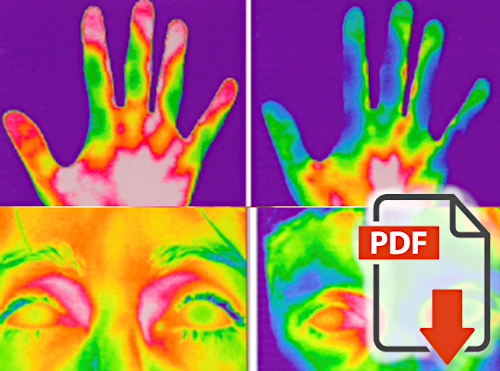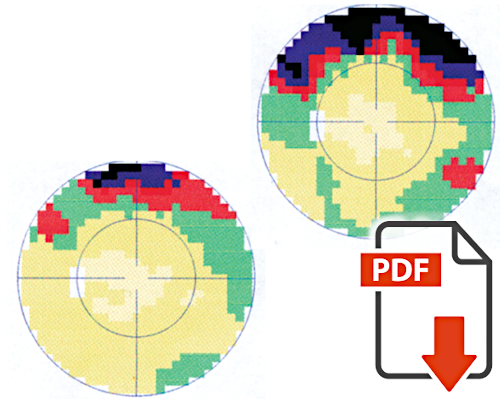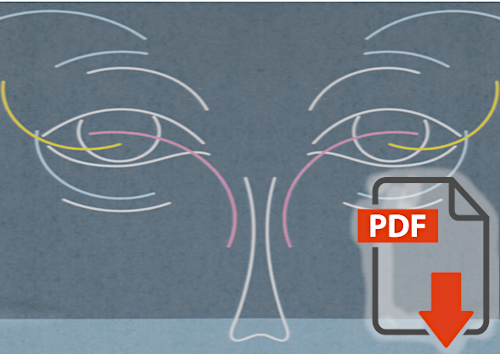Flammer syndrome
| Flammer syndrome (FS) describes a phenotype. This is characterized by primary vascular dysregulation (PVD) together with a group of signs and symptoms that can occur sporadically in all people, but are highly clustered in people with FS. The syndrome was first described by Katarzyna Konieczka and co-authors and is named after the Swiss ophthalmologist Josef Flammer in recognition of his pioneering work in the field. We will limit our discussion here to the relationship between Flammer syndrome and glaucoma. For more information on Flammer syndrome, please refer to: http://www.flammer-syndrome.ch |
|
 K Konieczka, R Ritch, CE Traverso, DM Kim, MS Kook, A Gallino, O Golubnitschaja, C Erb, HA Reitsamer, T Kida, N Kurysheva, K Yao: Flammer Syndrome |
Flammer syndrome (FS) was first described in this publication by Katarzyna Konieczka et al. It is defined by a phenotype of individuals with altered blood vessel response to stimuli, such as cold or emotional stress. FS is further characterized by many symptoms and signs described in this review. People with FS usually have a very good life expectancy, but also a disposition for certain diseases. Of interest here in this context is the increased risk for normal tension glaucoma. |
 J Flammer: Contribution of the Flammer syndrome to the onset and progression of GON (Video) |
In this presentation, J. Flammer explains why and how Flammer syndrome contributes to the onset and progression of glaucomatous optic neuropathy. |
 J Flammer, K Konieczka: The discovery of the Flammer syndrome: a historical and personal perspective |
Years of clinical and experimental research finally led to the discovery of Flammer's syndrome. It began at a time when measurements of the blood flow in the eye were still difficult to perform. Based on observations of visual field behavior, Flammer and colleagues had already obtained the first evidence that the eyes, and in particular those of normal tension glaucoma patients, were involved in a global vascular dysregulation. This review includes the scientific studies based on which, Konieczka et al. described Flammer's syndrome. |
 K Konieczka HJ Choi, S Koch, F Fankhauser, A Schötzau, DM Kim: Relationship between normal tension glaucoma and Flammer syndrome |
Flammer syndrome (FS) has been discovered and described in European patients and is diagnosed partly on the basis of history and then mainly on the basis of objective findings. Konieczka et al. therefore investigated whether FS symptoms are also more frequent in normal tension glaucoma patients in Korea. Although the symptoms were only recorded subjectively as self-declaration with a questionnaire, a significant association between FS symptoms and normal tension glaucoma was found. |
 K Konieczka, J Flammer: Phenomenology and Clinical Relevance of the Flammer Syndrome |
Konieczka, who was the first to describe Flammer syndrome, summarizes all the symptoms and signs of the syndrome in this overview. It shows how the subjective and objective findings are evaluated in everyday clinical practice in order to reach a diagnosis for the individual patient. This in turn is the prerequisite for an efficient therapy. |
 B Terelak-Borys, I Grabska-Liberek, A Schötzau, K Konieczka: Transient visual field impairment after cold provocation in glaucoma patients with Flammer syndrome |
People with Flammer syndrome (FS) react with their blood vessels more sensitive to cold. This can be well observed e.g. at the blood vessels of the hands. Interestingly, cold stimulation also has an effect on blood flow in the eyes. A temporary reduction in ocular blood flow leads to a temporary deterioration of the visual field, as shown by Terelak-Borys et al. This study thus shows that a) people with FS react differently to cold, b) that the eyes also participate in this reaction, and c) that this is directly reflected in the visual fields, even if the patients do not subjectively perceive the change. |
 B Terelak-Borys, I Grabska-Liberek, Piekarniak-Wozniak K Konieczka: Choroidal infarction in a glaucoma patient with Flammer syndrome: a case report with a long term follow-up |
On this webpage we focus on vascular aspects of glaucoma. Flammer syndrome (FS) is one of the possible causes. However, FS is not only a risk factor for glaucoma damage, but also for other systemic and ocular diseases. That is why it is not uncommon for patients with FS to have more than one FS-related disease, as this casuistic by Terelak-Borys demonstrates. This patient had FS, chronic glaucoma, and choroidal infarction. |
 K Konieczka, J. Flammer, J. Sternbuch, T. Binggeli, S. Fraenkl: Leberʼs Hereditary Optic Neuropathy, Normal Tension Glaucoma, and Flammer Syndrome: Long Term Follow-up of a Patient |
People with Flammer syndrome have poorer autoregulation and therefore more unstable blood flow. This leads to oxidative stress. This in turn weakens the mitochondria in the axons in the optic nerve head. In this way, it contributes to glaucoma damage. People with Leber's hereditary optic neuropathy have a mutation in mitochondrial DNA and are therefore even more sensitive to oxidative stress. Konieczka et al. describe a patient with an mtDNA mutation who had acute optic neuropathy in one eye and chronic normal tension glaucoma in the other eye. |